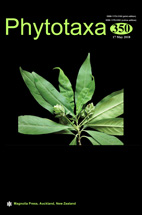Abstract
The Mucor genus mostly comprises saprobe specimens which are commonly isolated from herbivore dung, fruit and soil. Morphologically, Mucor specimens produce simple or branched sporangiophores without basal rhizoids and non-apophysate sporangia. During a survey of Mucorales in soil from an upland rainforest area in Pernambuco, Brazil, one specimen of Mucor was isolated and characterized based on morphological, physiological and molecular data (ITS1-5.8S-ITS2 and LSU rDNA sequences). The specimen is characterized by producing strongly sympodially branched sporangiophores and sporangiospores which can contain one or more granules at each end. The columellae are frequently globose or obovoid, some ovoid or cylindrical with a truncate base, rarely piriform. It grew better at 25ºC, with no development at 35ºC. Based on the evidence of the analyzed datasets, a new species of Mucor is proposed.

